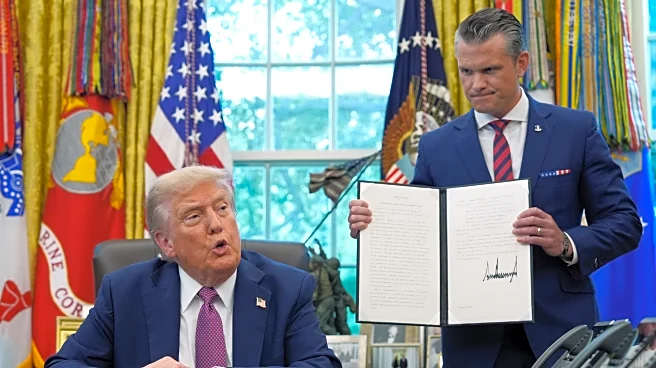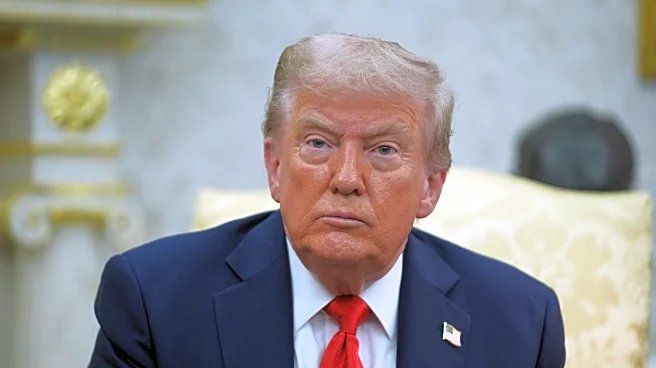What's Happening?
President Trump has issued an executive order to rename the Department of Defense as the Department of War, bypassing federal law. This move, announced in the Oval Office, is part of an effort to promote a 'warrior ethos' at the Pentagon. Defense Secretary Pete Hegseth and Gen. Dan Caine, chairman of the Joint Chiefs of Staff, have supported the change, which is intended to send a message of strength and victory. The Pentagon has already begun implementing the rebranding, with changes to social media accounts and the department's website. However, the official name change is not final, as the Department of Defense name is enshrined in law through a 1949 amendment to the National Security Act.
Why It's Important?
The rebranding of the Department of Defense to the Department of War has significant implications for U.S. military policy and international perception. It reflects a shift towards a more aggressive military stance, emphasizing readiness to strike and dominate enemies. This change could impact defense spending and military strategy, as critics argue that rebranding alone does not address the need for increased investment in military capabilities. The move has sparked debate among political leaders and defense experts, with concerns about the cost and effectiveness of the rebranding effort.
What's Next?
The executive order allows the use of 'Secretary of War' as a secondary title, but the official name change requires legislative action. The Pentagon is assessing the financial implications of the rebranding, which could cost tens of millions of dollars. Political leaders and defense experts are likely to continue debating the merits and consequences of the change, with potential legislative challenges to the executive order. The rebranding may also influence future defense policy and budget discussions.
Beyond the Headlines
The rebranding raises questions about the cultural and historical significance of the Department of War title, which was originally established in 1789 and survived until 1947. The move may reflect broader shifts in U.S. military identity and strategy, as well as the administration's approach to national security. It also highlights the tension between executive authority and legislative oversight in defense policy.












